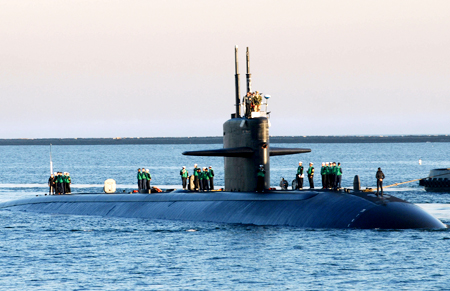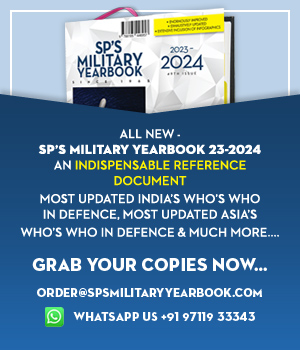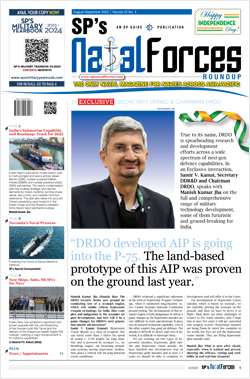INDIAN ARMED FORCES CHIEFS ON OUR RELENTLESS AND FOCUSED PUBLISHING EFFORTS

The insightful articles, inspiring narrations and analytical perspectives presented by the Editorial Team, establish an alluring connect with the reader. My compliments and best wishes to SP Guide Publications.

"Over the past 60 years, the growth of SP Guide Publications has mirrored the rising stature of Indian Navy. Its well-researched and informative magazines on Defence and Aerospace sector have served to shape an educated opinion of our military personnel, policy makers and the public alike. I wish SP's Publication team continued success, fair winds and following seas in all future endeavour!"

Since, its inception in 1964, SP Guide Publications has consistently demonstrated commitment to high-quality journalism in the aerospace and defence sectors, earning a well-deserved reputation as Asia's largest media house in this domain. I wish SP Guide Publications continued success in its pursuit of excellence.
Submarines
Alert to Danger

Safety concerns of a nuclear submarine have to start right at the design stage to ensure the highest standards in quality of construction, maintenance and repair, together with flawless execution of processes and procedures, judicious selection of suitable personnel and world class training.
Conventional submarines use diesel engines that require air for combustion while travelling on the surface of the water but use battery-powered electric motors while operating submerged. Due to the limited life of batteries a conventional submarine can remain submerged only for a few days running at slow speed and only a few hours at top speed.
On the other hand, nuclear submarines employ nuclear reactors to generate electricity for the motors that drive the main propeller shaft. The reactor uses highly enriched fuel to enable it to deliver a large amount of energy from a smaller reactor. The nuclear reactor also supplies energy to the submarine’s other subsystems, such as for maintenance of air quality, fresh water production by distilling salt water from the ocean and temperature regulation.
Current generations of nuclear submarines do not need to be refueled throughout a 25-year lifespan, implying that they can sail around the world about 41 times without surfacing. This ability, combined with advanced nuclear-tipped missiles, makes nuclear submarines a very potent weapon. The US and erstwhile USSR pursued technologies to build a nuclear submarine during the mid-20th century. Washington beat Moscow to the task and the world saw its first nuclear submarine USS Nautilus on January 21, 1954 that commenced service on January 17, 1955. It could circle the globe submerged for up to four months without refueling, was 320 ft long and cost about $55 million. The pioneer in this field was Captain (later Admiral) Hyman G. Rickover, USN.
Soon after, USSR followed. From the late 1950s until the end of 1997, USSR and later Russia, built a total of 245 nuclear submarines—more than all other nations combined. Currently the US, Russia, France, UK and China have this capability. Several other countries, including Argentina, India and Brazil, have ongoing projects to build nuclear-powered submarines.





